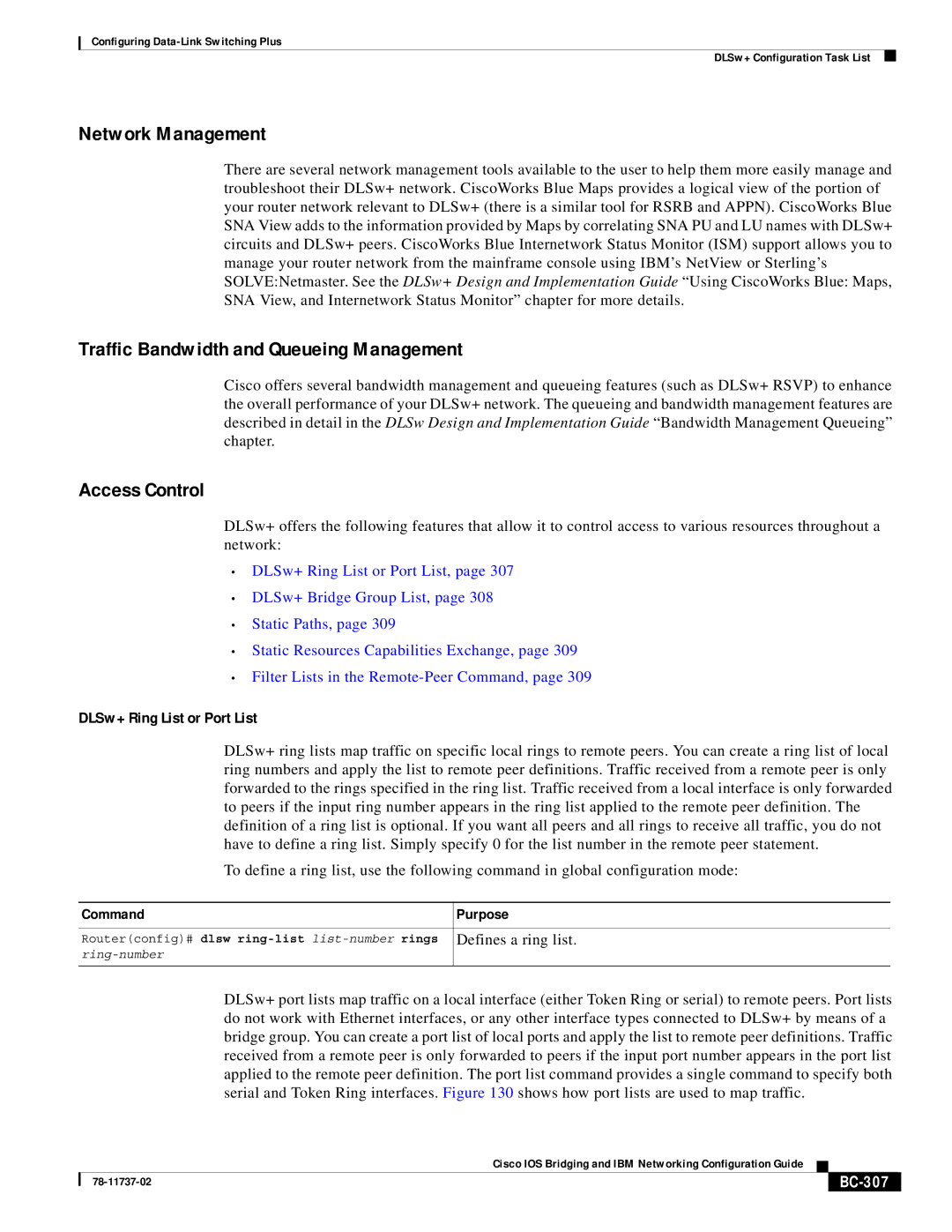Configuring
DLSw+ Configuration Task List
Network Management
There are several network management tools available to the user to help them more easily manage and troubleshoot their DLSw+ network. CiscoWorks Blue Maps provides a logical view of the portion of your router network relevant to DLSw+ (there is a similar tool for RSRB and APPN). CiscoWorks Blue SNA View adds to the information provided by Maps by correlating SNA PU and LU names with DLSw+ circuits and DLSw+ peers. CiscoWorks Blue Internetwork Status Monitor (ISM) support allows you to manage your router network from the mainframe console using IBM’s NetView or Sterling’s SOLVE:Netmaster. See the DLSw+ Design and Implementation Guide “Using CiscoWorks Blue: Maps, SNA View, and Internetwork Status Monitor” chapter for more details.
Traffic Bandwidth and Queueing Management
Cisco offers several bandwidth management and queueing features (such as DLSw+ RSVP) to enhance the overall performance of your DLSw+ network. The queueing and bandwidth management features are described in detail in the DLSw Design and Implementation Guide “Bandwidth Management Queueing” chapter.
Access Control
DLSw+ offers the following features that allow it to control access to various resources throughout a network:
•DLSw+ Ring List or Port List, page 307
•DLSw+ Bridge Group List, page 308
•Static Paths, page 309
•Static Resources Capabilities Exchange, page 309
•Filter Lists in the
DLSw+ Ring List or Port List
DLSw+ ring lists map traffic on specific local rings to remote peers. You can create a ring list of local ring numbers and apply the list to remote peer definitions. Traffic received from a remote peer is only forwarded to the rings specified in the ring list. Traffic received from a local interface is only forwarded to peers if the input ring number appears in the ring list applied to the remote peer definition. The definition of a ring list is optional. If you want all peers and all rings to receive all traffic, you do not have to define a ring list. Simply specify 0 for the list number in the remote peer statement.
To define a ring list, use the following command in global configuration mode:
Command | Purpose |
|
|
Router(config)# dlsw | Defines a ring list. |
| |
|
|
DLSw+ port lists map traffic on a local interface (either Token Ring or serial) to remote peers. Port lists do not work with Ethernet interfaces, or any other interface types connected to DLSw+ by means of a bridge group. You can create a port list of local ports and apply the list to remote peer definitions. Traffic received from a remote peer is only forwarded to peers if the input port number appears in the port list applied to the remote peer definition. The port list command provides a single command to specify both serial and Token Ring interfaces. Figure 130 shows how port lists are used to map traffic.
|
| Cisco IOS Bridging and IBM Networking Configuration Guide |
|
|
|
|
|
| |||
|
|
|
|
| |
|
|
|
|
